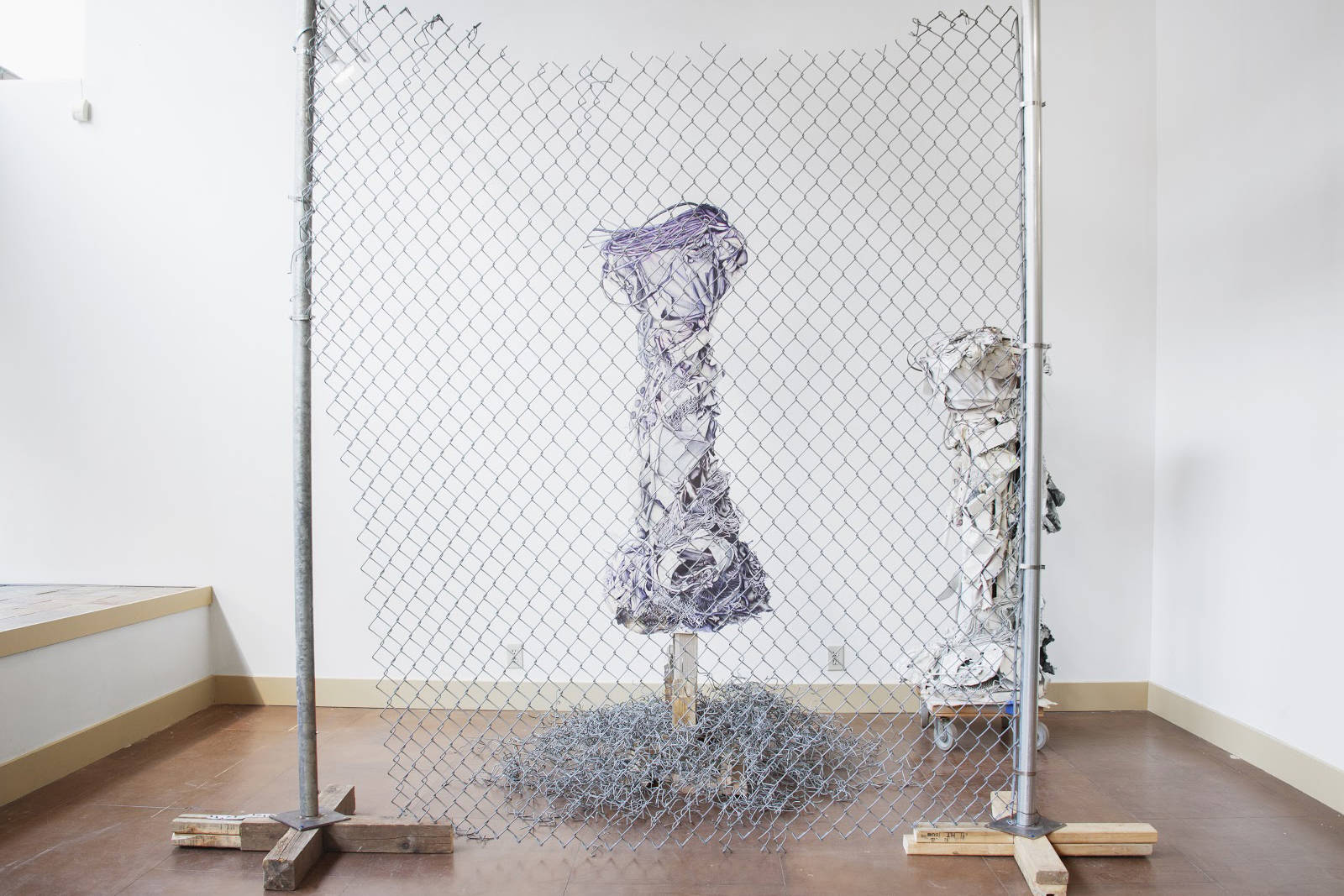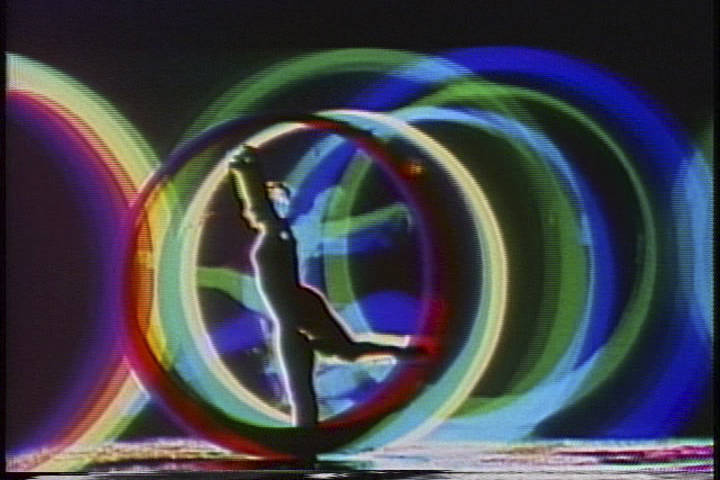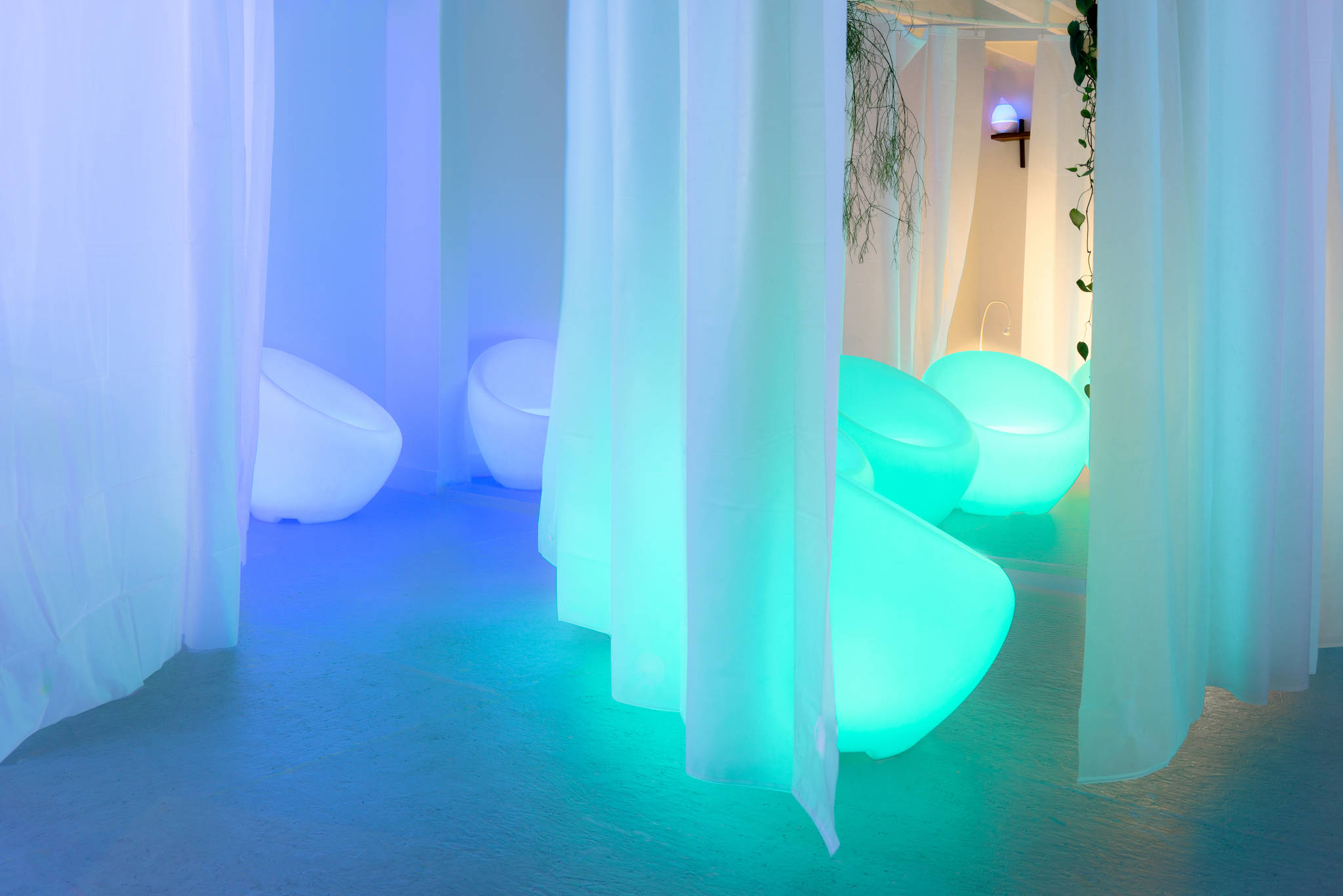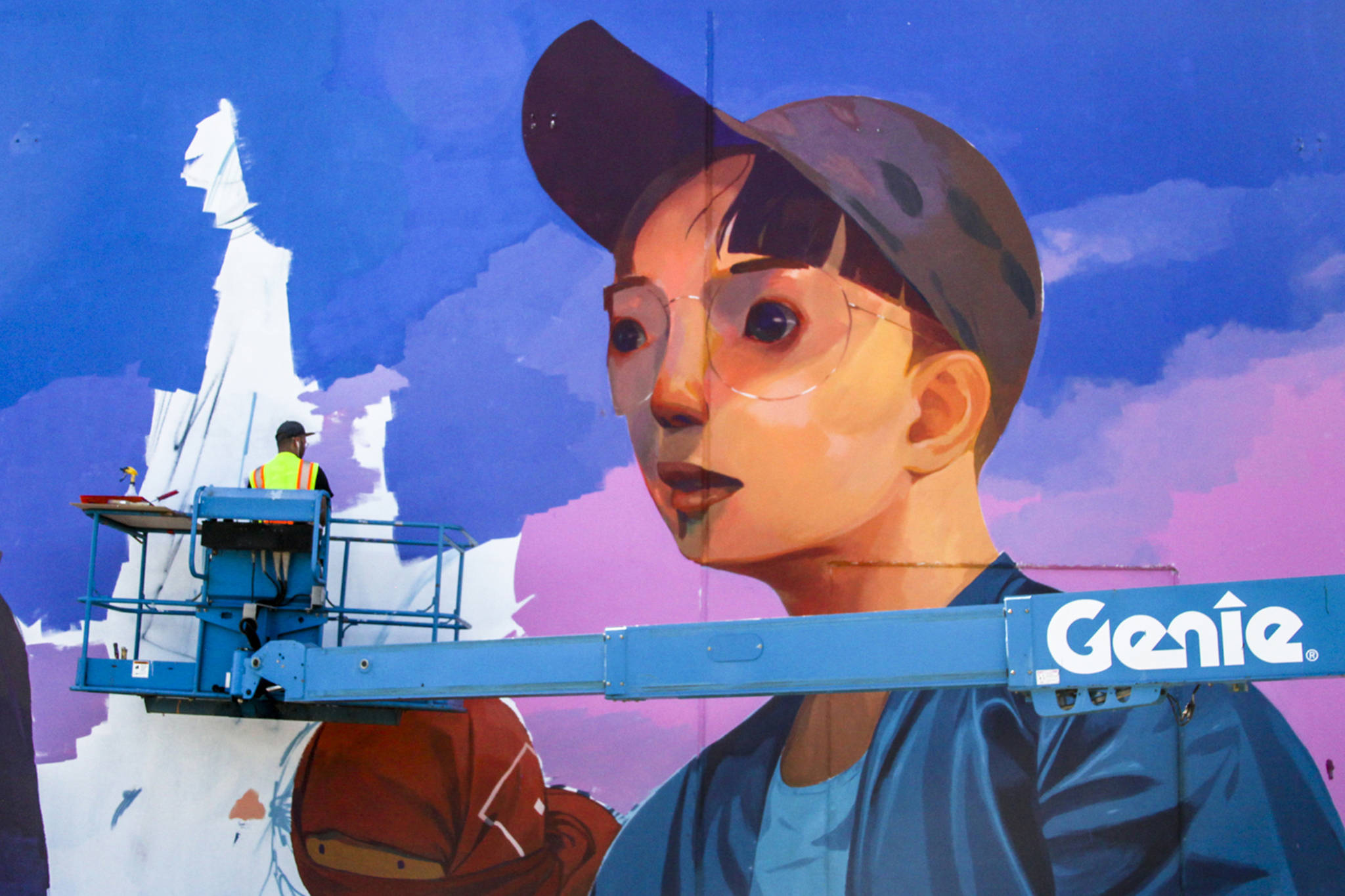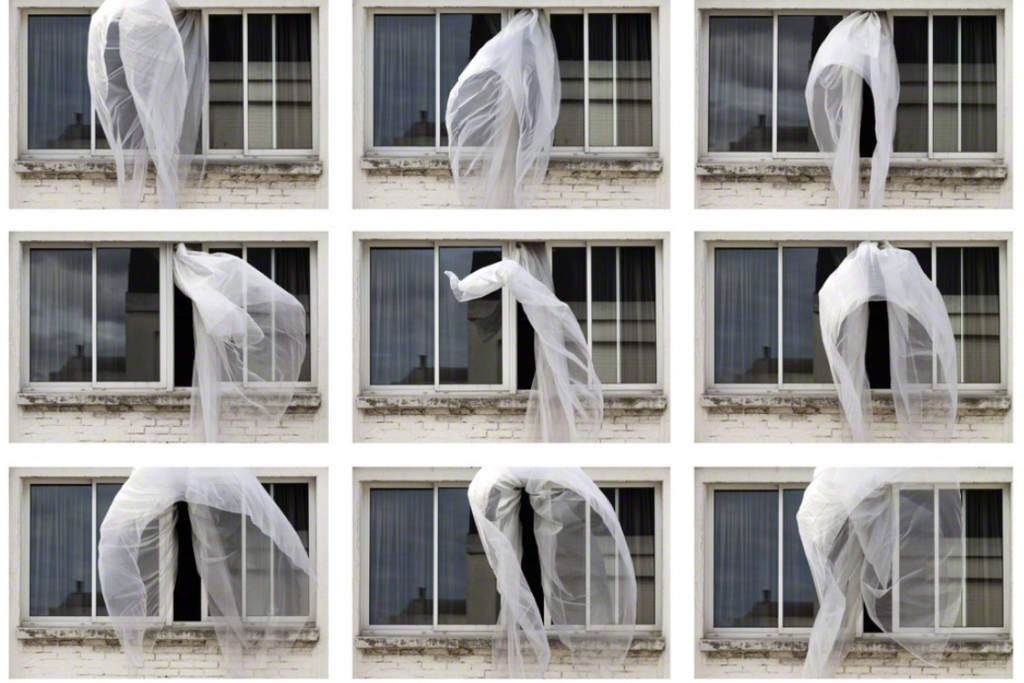Trash is a shared condition. Cleaning, unwrapping, defoiling, discarding—the mundane acts of life generate sprawling metropolises of waste. And the garbage we make disturbs us. In it we see ravenous consumption habits, ravaged psyches. We react to it, as Don DeLillo in Underworld writes, “not only technologically but in our hearts and minds. We let it shape us. Garbage comes first, then we build a system to deal with it.” If museum artifacts are a reflection of a civilization, trash is a mirror in a fluorescent room—starkly bright, magnifying every blemish.
Recology Cleanscapes, the recycling facility in SoDo, enlists artists to examine this ubiquitous yet unseen world. Every year, artists receive studio space, money, and access to the unfiltered waste stream. This year’s artists, Meg Hartwig and Max Cleary, spent the past five months rifling through plastic, paper, glass, metal, and miscellany that gets tossed in recycling.
“Loose plastic bags are enemy number one,” Recology’s Waste Zero Specialist Danielle Gambogi states as we watch workers pluck them off the conveyor belt. There’s a specific way to recycle plastic bags—tying them in neat bundles so they don’t get caught in machinery—but this knowledge isn’t intuitive if you don’t see the process. Other wrong items are more egregious; throughout this residency the artists have scavenged a bowling ball, a wood-mounted shooting target, a watering fountain, a huge rock, and a biohazardous container for human organs. Some of these items became incorporated into the art.
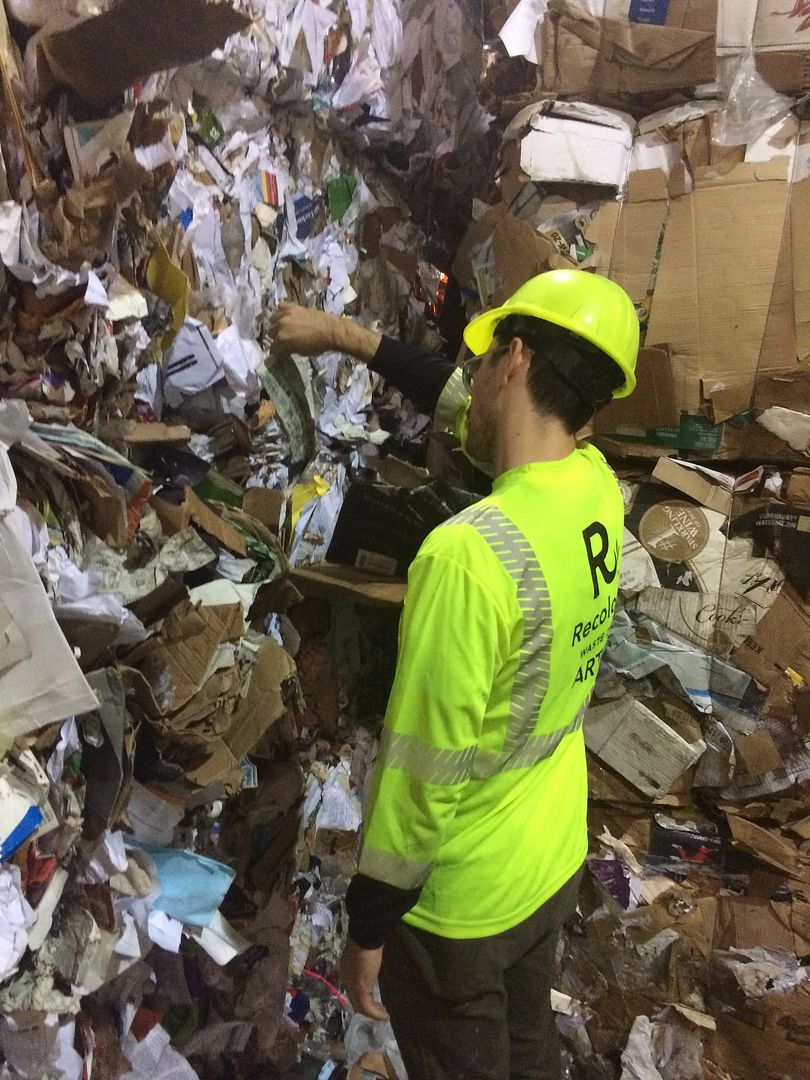 Max Cleary scavenging the mountainous heaps of waste materials at Recology CleanScapes’ Material Recovery Facility. Photo by Minh Nguyen.
Max Cleary scavenging the mountainous heaps of waste materials at Recology CleanScapes’ Material Recovery Facility. Photo by Minh Nguyen.
This initiative is an adaptation of the San Francisco company’s longstanding artist-residency program, which has ran since the ’90s and features a Sculpture Garden, a large outdoor area which includes projects by former artists. The genre of trash art often coincides with ecological art: works that typically raise environmental issues, and in these cases use discarded materials. There’s Mandy Barker’s renditions of the waste debris from the Pacific Ocean, Garbage Patch, and Rodrigo Alonso’s sculptures of computers, cables, and other electronics cast in epoxy resin that draw attention to “e-waste.” The Sculpture Garden hosts Marta Thomas’ Earth Tear, plastic bottles assembled in the form of a god-sized teardrop.
Channeling DeLillo, Hartwig reflects that waste facilities are sites of a society’s desire for control. “There is an imbalance in the systems that humans have created to be more ‘civilized.’ I create work to question the constructs of power and control that enforce these imbalances, both personally and globally.” For the residency showcase, Hartwig will present drawings from makeshift sculptures, meticulously sketched in ballpoint pen and blended with denatured alcohol for shading. “I spent a ridiculous amount of hours drawing found refuse. Throughout this process I have been fully immersed in considerations of ‘value.’ ” Hartwig wanted to create a physical memory, or “memorials,” of the objects.
Cleary’s approach too was psychological, with a pinch of the supernatural. Cleary is presenting photographs that invoke the history of spirit photography, a 19th-century genre that attempts to document ghosts and other spiritual entities. He assembled discarded furniture particle board with an assortment of found objects. “What you’re seeing in these pieces are constructed abstractions of gravestones, the ornaments they tend to gather, and in some cases the physical interactions we share with them. A few of them ended up being kind of creepy.” They’re printed large on PET vinyl, a plastic with a quality similar to that of water bottles.
Recology, charmingly dubbed “Murph” (after Material Recovery Facility), opened in 2014, and treats the recycling from eight suburban cities. Roughly 8,000 tons are processed at The Murph each month. “The most impactful thing I’m leaving this residency with is a greater appreciation for what goes into waste management,” Cleary tells me. “That trash doesn’t just go away. It comes into contact with the people who transport it, sort it, clean it, sell it, repurpose it, and so on. Every person needs to see what happens to their trash and recycling.” Through an unconventional approach, the waste facility is making the underworld of trash a bit more visible.
Recology CleanScapes Artist Exhibition: Max Cleary and Meg Hartwig. 165 S. Jackson St. Free. All ages. 6–9 p.m. Thurs., Sept. 7.
